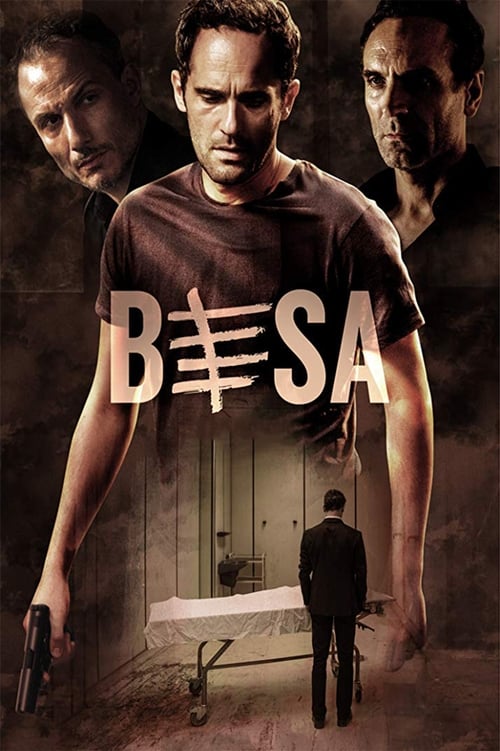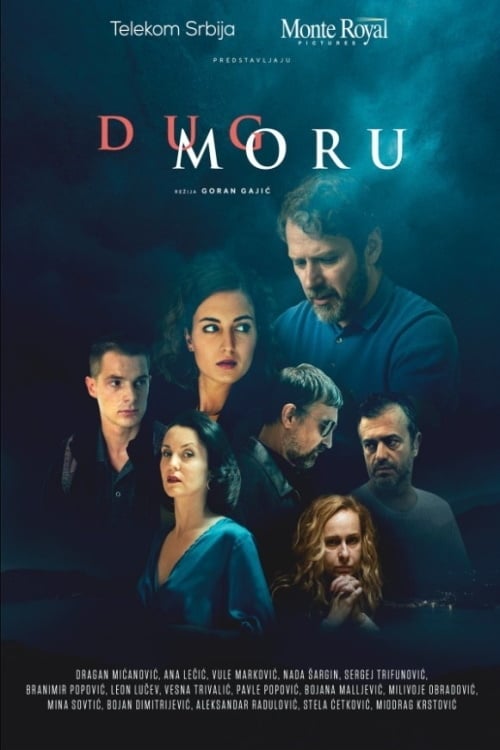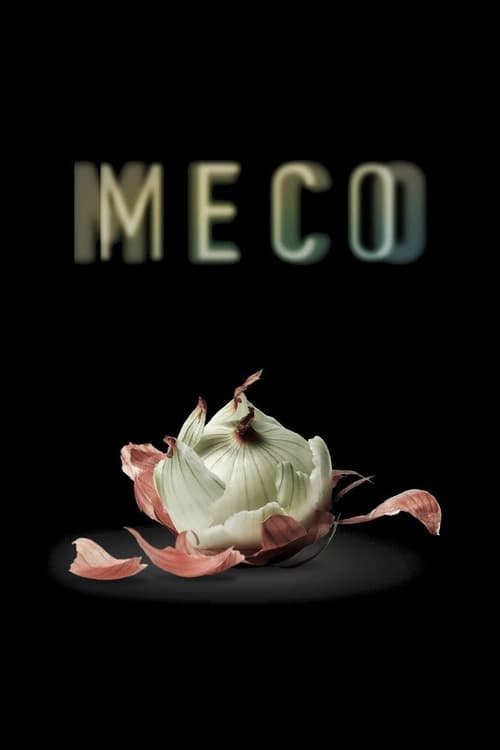
Ask Your Own Question
What is the plot?
In the opening scenes of "Besa," we are introduced to the protagonist, a young Albanian man named Luan. He lives in a small village in Kosovo, where he is deeply connected to his family and community. Luan's life takes a dramatic turn when he learns that his father, a former soldier, has been killed in a violent altercation. This event sets off a chain reaction of grief and anger within Luan, who feels compelled to seek justice for his father's death.
As Luan grapples with his loss, he discovers that his father's death was not just a random act of violence but part of a larger conflict involving rival factions in the region. This revelation ignites a desire for revenge in Luan, and he begins to investigate the circumstances surrounding his father's murder. He interviews witnesses and gathers information, which leads him to a powerful local warlord named Dritan, who is rumored to be behind the killing.
Luan's quest for vengeance becomes increasingly dangerous as he confronts Dritan's men. In a tense encounter, Luan confronts one of Dritan's associates in a bar, demanding answers about his father's death. The confrontation escalates into a physical fight, with Luan displaying both determination and desperation. He manages to escape, but not without sustaining injuries, which further fuels his resolve to take down Dritan.
As Luan delves deeper into the criminal underworld, he meets a woman named Mira, who becomes a pivotal figure in his life. Mira is a strong-willed journalist who is also investigating the corruption and violence in the region. Their relationship develops as they share their experiences and motivations, with Mira encouraging Luan to consider the broader implications of his quest for revenge. Despite her warnings, Luan remains fixated on confronting Dritan.
In a critical turning point, Luan decides to infiltrate one of Dritan's gatherings, posing as a potential ally. This risky move allows him to gather intelligence on Dritan's operations and the extent of his influence. During the event, Luan witnesses the brutality of Dritan's men firsthand, which solidifies his determination to take action. He manages to overhear a conversation that reveals Dritan's plans for further violence, prompting Luan to act quickly.
Luan's plan culminates in a violent confrontation with Dritan and his men. He orchestrates an ambush, using the information he has gathered to catch them off guard. The scene is intense, filled with gunfire and chaos as Luan fights for his father's honor. He faces off against Dritan in a brutal one-on-one fight, fueled by rage and grief. The struggle is physical and emotional, with Luan's motivations driving him to push through pain and exhaustion.
In the aftermath of the confrontation, Luan is left to deal with the consequences of his actions. While he has avenged his father's death, he is haunted by the violence he has participated in and the lives affected by his quest for revenge. The emotional toll weighs heavily on him, leading to moments of reflection and doubt about the path he has chosen.
As the story concludes, Luan must confront the reality of his choices. He realizes that the cycle of violence may never truly end, and he is left to ponder what it means to seek justice in a world filled with conflict. The final scenes depict Luan standing alone, contemplating his future and the legacy of his father's memory, leaving viewers with a sense of unresolved tension and the complexities of his journey.
What is the ending?
In the ending of "Besa," the story culminates in a tense confrontation that reveals the deep-seated conflicts and loyalties among the characters. The protagonist, who has been navigating a web of betrayal and moral dilemmas, faces a critical choice that will determine not only their fate but also the lives of those around them. The resolution brings a mix of sacrifice and redemption, ultimately leading to a bittersweet conclusion for the main characters.
As the final scenes unfold, we see the protagonist standing at a crossroads, grappling with the weight of their decisions. The atmosphere is thick with tension, and the stakes have never been higher. The protagonist's internal struggle is palpable, reflecting their journey throughout the series. They are torn between loyalty to their friends and the harsh realities of their situation.
In a pivotal moment, the protagonist makes a choice that leads to a confrontation with the antagonist. This scene is charged with emotion, as past grievances and unresolved conflicts come to the forefront. The antagonist, embodying the darker aspects of ambition and betrayal, pushes the protagonist to their limits. The dialogue is sharp, filled with accusations and revelations that lay bare the characters' motivations and fears.
As the confrontation escalates, the protagonist's allies rally to support them, showcasing the bonds that have formed throughout the series. Each character's fate becomes intertwined in this climactic moment, leading to a series of actions that will have lasting consequences. The tension peaks as sacrifices are made, and the protagonist ultimately emerges from the conflict changed, carrying the weight of their choices.
In the aftermath, the resolution brings a sense of closure, albeit tinged with sadness. The protagonist reflects on their journey, acknowledging the losses and the lessons learned. The final scenes depict the remaining characters as they begin to rebuild their lives, each carrying the scars of their experiences. The story concludes with a sense of hope, suggesting that despite the darkness, there is a path forward.
The fates of the main characters are revealed: the protagonist finds a new purpose, having navigated the complexities of loyalty and sacrifice; the antagonist faces the consequences of their actions, left to reckon with their choices; and the supporting characters, having endured the trials, begin to forge new paths, united by their shared experiences. The ending encapsulates the themes of loyalty, redemption, and the enduring impact of choices made in the face of adversity.
Is there a post-credit scene?
The TV show "Besa," produced in 2018, does not feature a post-credit scene. The series concludes its narrative without any additional scenes after the credits roll. The final moments of the show focus on the resolution of the main characters' arcs, leaving viewers with a sense of closure regarding the storylines presented throughout the series. The emotional weight of the concluding scenes is meant to resonate with the audience, emphasizing the themes of loyalty, sacrifice, and the complexities of human relationships that are central to the narrative.
What motivates the main character, Besa, throughout the series?
Besa is driven by a deep sense of loyalty to her family and her community. Her internal struggle is highlighted by her desire to protect her loved ones while navigating the dangerous world around her. This duality creates tension as she often has to make morally ambiguous choices that challenge her values.
How does Besa's relationship with her father evolve over the course of the series?
Initially, Besa's relationship with her father is strained due to his overprotectiveness and traditional views. As the series progresses, they face various challenges that force them to confront their differences. Key scenes depict moments of vulnerability where Besa's father begins to understand her perspective, leading to a gradual reconciliation.
What role does the antagonist play in Besa's journey?
The antagonist serves as a catalyst for Besa's transformation. Their confrontations are intense and emotionally charged, pushing Besa to her limits. The antagonist embodies the external threats to Besa's world, forcing her to confront her fears and ultimately shaping her into a more resilient character.
How does the setting influence the characters' decisions in Besa?
The setting, a war-torn region, is integral to the characters' motivations and decisions. The harsh realities of their environment create a sense of urgency and desperation, influencing Besa and others to make choices that reflect survival instincts. Key scenes showcase the impact of the setting on their relationships and moral dilemmas.
What are the key turning points in Besa's character development?
Besa experiences several key turning points, including moments of betrayal, loss, and unexpected alliances. One pivotal scene involves her making a life-altering decision that tests her loyalty and courage. These moments are rich in emotional detail, showcasing her growth from a naive girl to a determined woman who takes control of her destiny.
Is this family friendly?
"Besa," produced in 2018, is a drama that delves into themes of loyalty, sacrifice, and the complexities of human relationships during a time of conflict. While it offers a compelling narrative, it contains several elements that may not be suitable for children or sensitive viewers.
-
Violence and Conflict: The show portrays scenes of war and violence, including gunfire and physical confrontations, which can be intense and distressing.
-
Death and Loss: Characters experience significant loss, including the death of loved ones, which is depicted in a poignant and emotional manner that may be upsetting.
-
Emotional Turmoil: The characters grapple with deep emotional struggles, including betrayal, guilt, and moral dilemmas, which may be heavy for younger audiences to process.
-
Mature Themes: The narrative explores complex themes such as loyalty to family versus moral choices, which may require a level of maturity to fully understand.
-
Cultural Tensions: The backdrop of ethnic conflict may introduce themes of prejudice and discrimination, which could be challenging for younger viewers to comprehend.
Overall, while "Besa" offers a rich narrative, its mature themes and emotional depth may not be appropriate for all audiences, particularly children or those sensitive to such content.
























